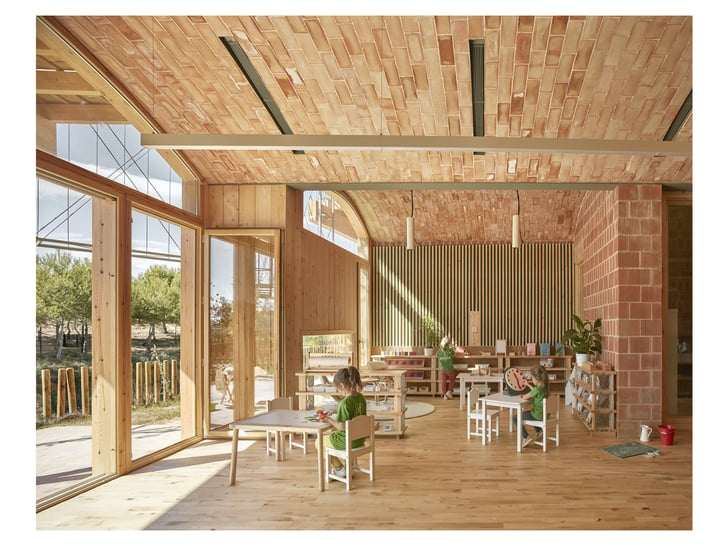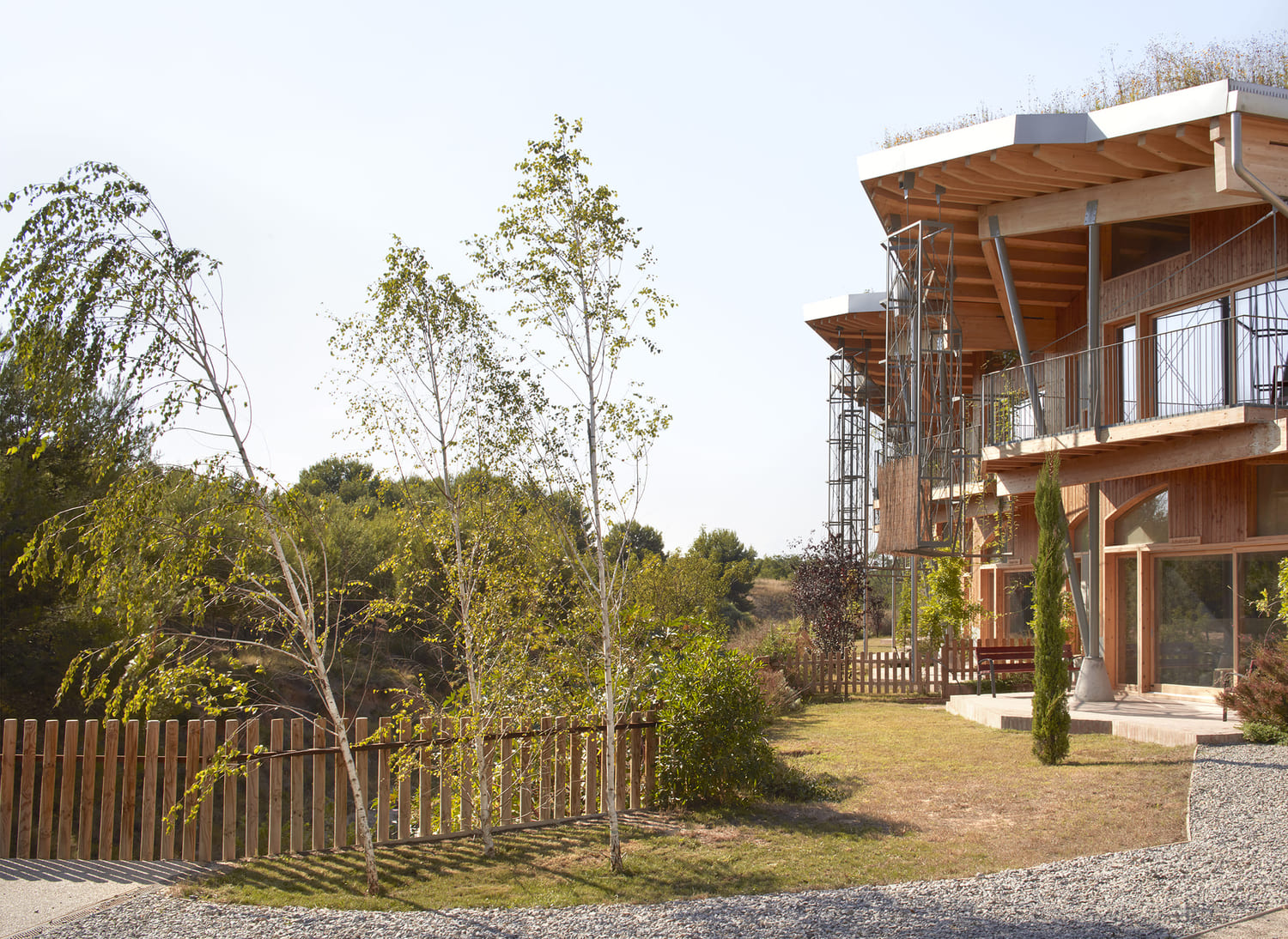Sustainability in the building industry is part of the process of social, economic and cultural transformation towards more sustainable buildings that seek not only to be more environmentally friendly, but also to demonstrate a commitment to people and their environment. But, how to demonstrate that our building is being respectful to the environment? One of the most valid ways is through sustainability certifications, which are assessment and certification systems that determine the sustainability of buildings.
One of them is the VERDE certification. It is a methodology adapted to Spanish regulations that helps incorporate sustainability measures in buildings by evaluating environmental, social, and economic aspects. To learn more about this certification, keep reading.
What is VERDE?
The VERDE certification is a methodology for assessing the sustainability of buildings which, through the tools available to it, aims to meet the needs of the Spanish construction industry. It is responsible for assessing the Life Cycle Analysis of a building and its environmental, social and economic aspects through indicators that measure the impact on aspects related to sustainability.
VERDE is carried out by the GBCe, or Consejo para la Edificación Sostenible de España, which is a non-profit organisation created in Madrid in 2008. This seeks to contribute to the transformation of the building industry towards more sustainable and environmentally friendly constructions.
Objectives of the certification
The vision of the GBCE is that a sustainable building has to comply with the "five Ps": people, and their quality of life and well-being; prosperity, as local and fair economic development; planet, by protecting its environment; peace and harmony; and pact, with the involvement and commitment of all.
To achieve this, we assess the location of the building; the indoor environmental quality, i.e. air, light, noise and comfort; the management of resources such as energy, water and materials; social integration, i.e. accessibility, training and communication; and technical quality in terms of monitoring, documentation and maintenance of a building.
Life cycle analysis plays a fundamental role in certification, as a sustainable building must be sustainable from the moment the materials with which it will be constructed are produced, until their demolition and possible second life.
As knowledge about sustainability advances, so do the tools implemented by VERDE, which are incorporating economic and social aspects to cover everything related to what is sustainable. Thanks to these tools, great advances have been made regarding the importance of sustainable building, among which we can highlight:
- Certifications are tools that help define sustainability objectives.
- They allow the execution of quality processes throughout the project.
- By being a forward-looking plan, risks and additional costs are avoided.
- Building sustainability is assessed transparently and independently.
- Having the certification serves as recognition and a marketing tool.
VERDE Areas
The three main areas of sustainability, such as environmental, social, and economic, contain a large number of aspects to evaluate. To be able to order and structure this information, VERDE analyses the following areas:
- PA: Plot and location
- EA: Energy and atmosphere
- NR: Natural resources
- IC: Indoor climate
- SE: Social and economic aspects
- BQ: Building quality
Each area has different criteria within it with a specific weight that will change according to the characteristics of the project.
VERDE Usage profiles
The VERDE certification allows for the evaluation of a large number of types of buildings. These can be divided into two major categories: Private residential use and Non-private residential uses.
Private residential use, those buildings that provide permanent accommodation for people. Such as:
- Collective: where more than one dwelling is built on a parcel unit.
- Single-family: a single dwelling is built on one plot unit.
- Urbanisation: where a single dwelling is built on several plot units.
- Dwelling in a building: where a dwelling is assessed within a collective residential building.
Uses other than private residential. Such as:
- Administrative: the purpose of which is the provision of administrative, technical-financial, training or other services.
- Public facilities: those where exhibitions, sporting events, cultural and sporting shows, congresses, etc. are held.
- Educational: where primary, secondary and higher education, both public and private, is provided.
- Commercial: where goods are displayed and sold, food is processed and sold, and service providers are located that are not considered office buildings.
- Accommodation and lodging: those with variable occupancy of guests depending on the tourist season of the year, as well as student residences, old people's homes, etc.
- Catering services: are those dedicated to providing services in bars, restaurants, cafés, etc.
- Sports
- Sanitary
- Light industry or logistics: those who are in charge of the storage and distribution of products, manufacturing plants or light industry, and workshops.
- Premises or part of a building: in which the use to which it is dedicated shall be considered.
Types of action
VERDE can be carried out in these cases or types of actions:
- New building: new building works that are not of a residential or public nature and that are developed on a single storey, without affecting the safety of people.
- Renovation and refurbishment: any work carried out on an existing building that does not involve its maintenance, or where the thermal generation and more than 25% of the total surface area of the building's thermal envelope is renewed.
- Existing buildings: those that do not reach the level of rehabilitation and reform, and those that have a completion date three years prior to the date of registration of the building in the VERDE certification.
- Mixed Performance: those where two of the above types of action are present.
Score
In the VERDE certification, the score is set from 1 to 5 leaves, with 5 leaves being the highest score. The evaluation and final score will depend on the percentage of points obtained in relation to the total points derived from the application of a particular building. Additionally, VERDE, with the aim of seeking uniformity in scoring across all areas for each leaf, defines a minimum compliance percentage per area.
Therefore, the score would look like this:
| VERDE Buildings 2022 Scoring Scale | ||
| Score | Minimum required level in each area | |
| Up to 30% of the points: | 0 leaves* | - |
| From >30% to 40% of points | 1 leaf* | - |
| From >40% to 50% of points | 2 leafs | >30 % |
| From >50% to 60% of points | 3 leaves | >35% |
| From >60% to 80% of points | 4 leaves | >45 % |
| From >80% to 100% of points | 5 leaves | >60 % |
Alignment with Level(s), SDGs, and European Taxonomy
The new version of VERDE Buildings 2022 was based on three key points that are aligned with:
- Level(s) in which, in order to align with the macro objectives and indicators of the European framework for sustainable buildings, new criteria were adapted and added to the assessment. Thus, the evaluation carried out can be communicated in accordance with the Level(s) methodology, which will allow for reports where the indicators established by the European Union are included.
- Sustainable Development Goals (SDGs), where the information from the evaluation results are expanded through a report on the contribution of the projects to the 17 SDGs. Thus, based on the obtained result and the criteria analysed in the evaluation, it is possible to determine which of the 169 SDG targets are being contributed to and at what level.
- European Taxonomy, which aims to consolidate common criteria for determining the sustainability of an economic activity. The evaluation of their criteria in the three economic activities proposed for the building as a whole (construction of new buildings, renovation of existing buildings, acquisition and ownership of buildings) is simplified thanks to the VERDE indicators.
Consulting and certification phases
Our working methodology at Zero Consulting to obtain VERDE certification is as follows:
- Pre-evaluation: where we previously conducted an evaluation in which we assessed the project and identified improvement proposals to consolidate a sustainability strategy for the project. The ideal project stage is in the basic project.
- Project consulting: in this phase, the document to be presented is drafted, describing the sustainability measures to be implemented and the requirements and supporting documents to be included in the project. This document should support the design team in drafting or enhancing the executive project.
- Pre-certification phase: all sustainability measures related to the project stage are justified by collecting all evidence and justifications of the different points to obtain the pre-certification certificate.
- Tender consulting: the purpose of this phase is to define in detail all aspects that may affect the contractor. A document will be prepared and attached to the bid. This phase is essential to ensure that the contractor is informed of the VERDE requirements and helps facilitate the construction process.
- On-site consulting: this is where training is provided to contractors and the collection of evidence from the construction site begins. The relevant aspects in this phase include the monitoring of environmental plans and quality control, the validation of material credit requirements, construction tests and the commissioning of facilities, commissioning of the envelope, and the monitoring and validation of change control in construction with respect to the executive project.
- Certification phase: all the sustainability measures relating to the construction phase are justified, gathering all the evidence and justifications of the different points in order to obtain the final certificate. In this phase, all changes that have occurred regarding the executive project with the as-built project are also updated. The change control carried out in the construction consulting phase will be key for this.
.png?width=270&height=284&name=Certificado%20VERDE(1).png)
We work with VERDE certification and other sustainability certifications in order to be part of the transformation process towards a more sustainable building that is underway and to demonstrate our commitment to our environment. We have been part of the building rehabilitation process with this certification, as well as projects such as the Imagine Montessori Sustainable School in which we have been involved from engineering, to monitoring, consulting, and the sustainability certification process.

VERDE stands out as a sustainability certification methodology for its ability to adapt to rehabilitation with the idea of participating in the reduction of the carbon footprint of our already built real estate.
An example of a Rehabilitation project we have worked on at Zero Consulting is with the building on Santa Tecla Street in Barcelona. This heritage-protected building obtained the VERDE certification 4 leaves. We invite you to read the following infographic on the implementation of this project.
For us, providing advice on VERDE certification is to give utmost importance to the Life Cycle Analysis of buildings and to be aligned with Level(s), SDGs and the European Taxonomy. Being a tool whose methodology is adapted to Spanish and European regulations and whose purpose is to measure the building sustainability of Spanish buildings, it will help and guide us to achieve constructions that are respectful of their surroundings and environment.
Obtaining the VERDE certification is a guarantee of having a building that respects the three fundamental areas of sustainability: environmental, social and economic. If you want to get VERDE, do not hesitate to contact us. With sustainability consulting, we will help you achieve this certification and reach your goal of having sustainable buildings.


